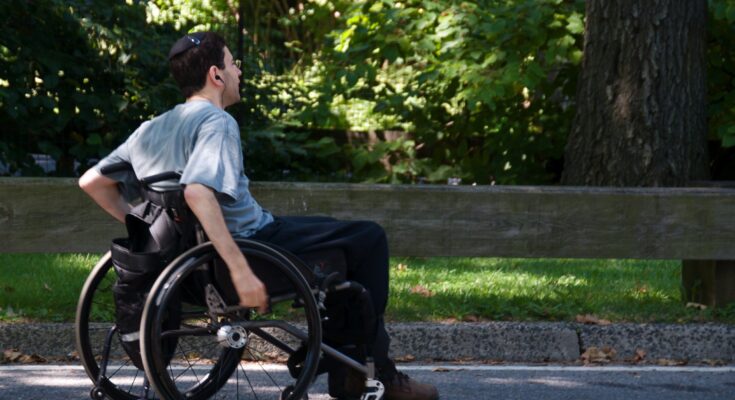In recent years, technological advancements have brought us closer to achieving what once seemed like science fiction, enabling paraplegics to walk again through the use of exoskeleton technology.
These wearable robotic devices are designed to support and enhance human movement. They do so by wrapping around the trunk of the person’s legs and providing the necessary support and mobility.
This technology would allow individuals with spinal cord and other severe injuries to stand, walk, and even climb mountains and stairs.
At the forefront of this technological revolution is Skip, an exoskeleton project inside Alphabet, Google’s parent company. They have partnered with an outdoor clothing company called Arc’teryx to make “power pants”.
The Tech being produced by the two companies is called “mountain goat”, and is designed to assist the wearer with mobility and boost their leg strength.
It’s said that it can provide almost 40% energy assistance to the user’s quadriceps and hamstring. This would offload work from the user’s knees.
This means that the exoskeleton being worked on will not only enable paraplegic patients to walk again but also help individuals who have sustained severe knee injuries.
How soon will paraplegic individuals with exoskeletons be able to walk again?
The technology being produced by Alphabet and Arc’teryx plans to begin shipments in late 2024. However, this technology will not be used to make paraplegic patients walk again as soon as some would expect. Instead, at launch the tech will focus on outdoor activities such as mountain climbing.
So who is developing the tech that will allow paraplegic patients to walk again? Unlike Alphabet and Arc’teryx, several companies are currently developing exoskeletons for medical purposes.
A leading company in this department is Ekso Bionics. The San Rafael-based company has focused its efforts on designing exoskeletons for everyday use for patients with spinal cord injuries. The company’s ultimate goal is for patients to regain mobility.
The company already produces the EksoNR, which is an exoskeleton that assists users in standing and walking during rehabilitation. This device is mostly used for patients who have been involved in severe accidents.
Ekso Bionics is but one example of the thousands of companies around the world working on exoskeletons for paraplegic patients.
Another notable example of this research is Caltech. Researchers at this institution have been working on a brain-controlled exoskeleton that uses neurocontrol interfaces to enable more dynamic and natural movement for users. This Caltech project is known as the RoAMS, which stands for Robotic-Assisted Mobility Science
Exoskeletons are going mainstream
It’s hard to predict when exoskeletons will be mass-produced to allow paraplegic patients to walk once again. Despite this, it is undeniable that these remarkable advancements have led exoskeleton technology to go mainstream.
A prime example of this is the exoskeleton used at the Paris 2024 Olympics.
Kevin Piette lost the ability to use his legs after a car accident 11 years ago. But his condition did not get in the way of him carrying the Olympic torch in France, thanks to the French engineering company, Wandercraft.
The company, which was founded in 2012, produces exoskeletons for medical and personal use. Their most famous model is the Atalante X which is already used in physical rehabilitation centers worldwide.



